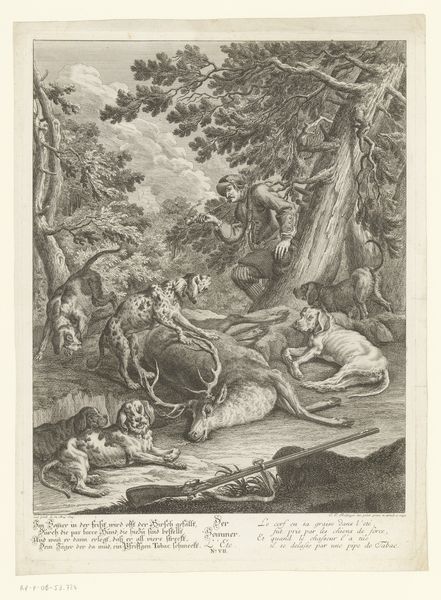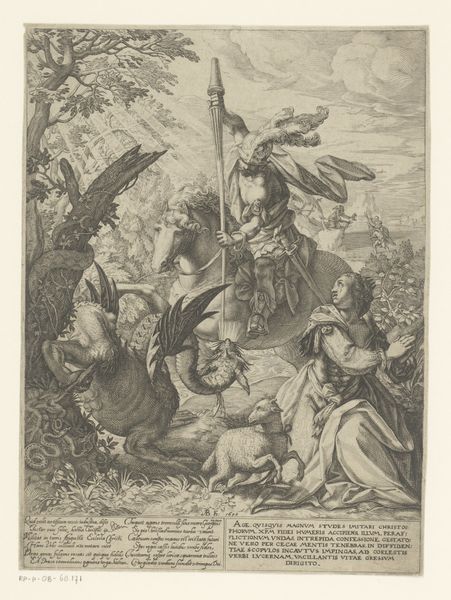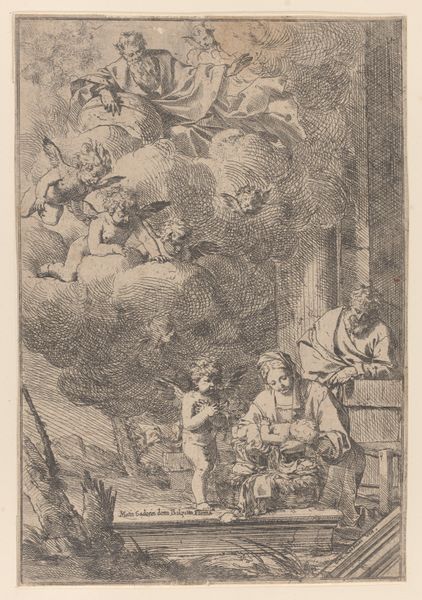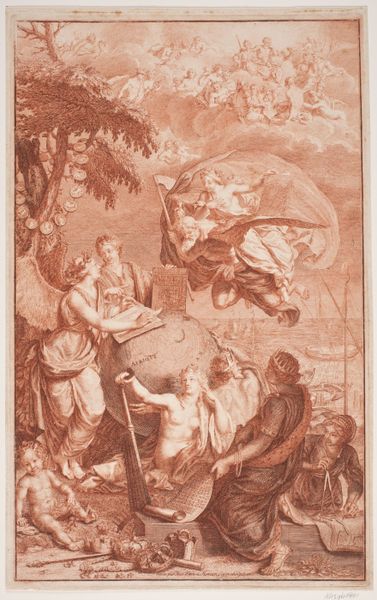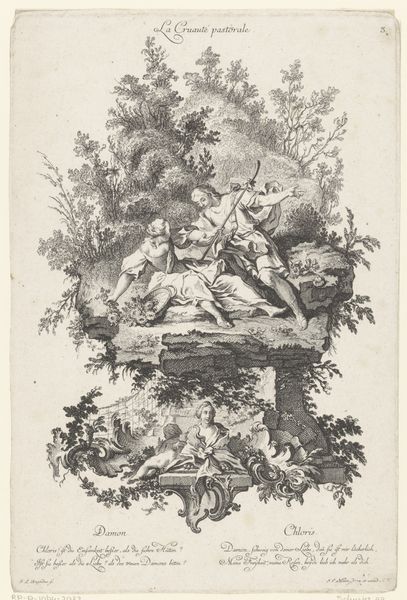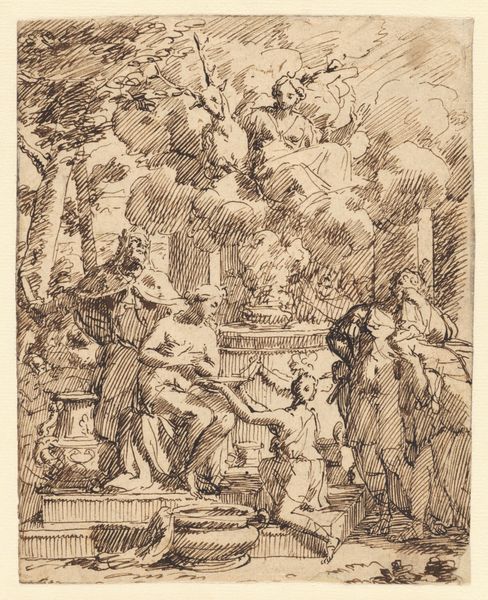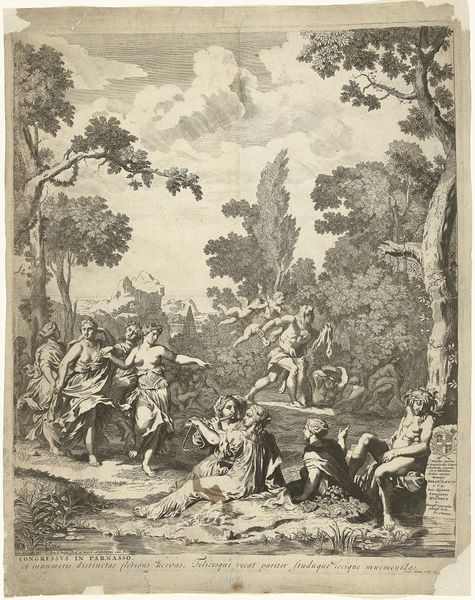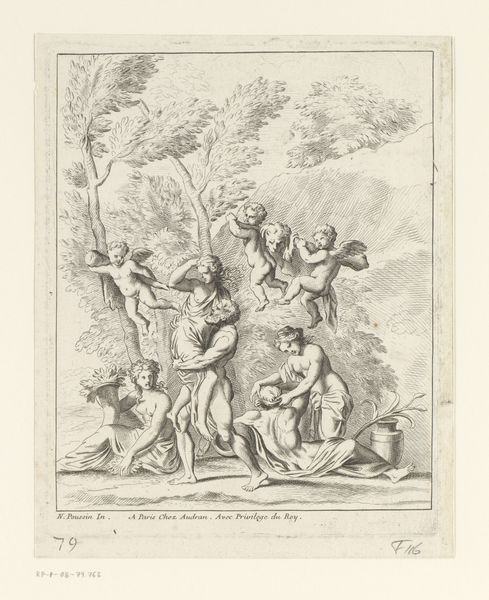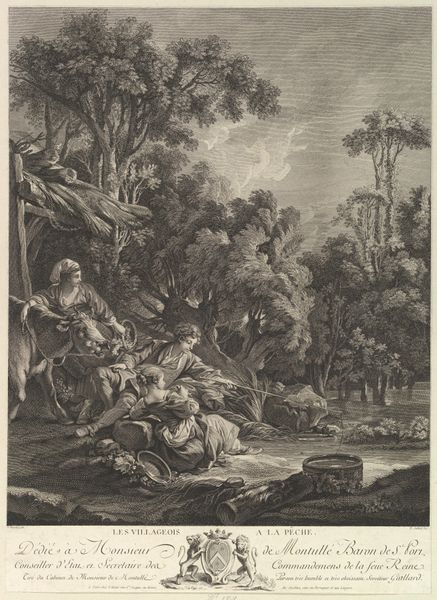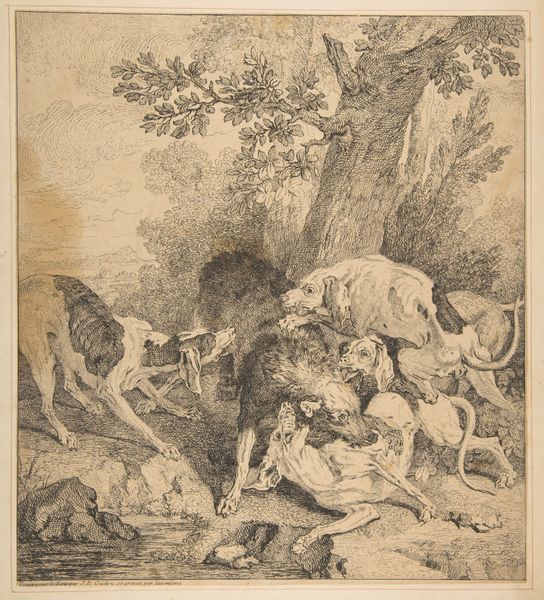
drawing, print, etching, ink
#
portrait
#
drawing
#
baroque
#
animal
# print
#
etching
#
landscape
#
figuration
#
ink
#
horse
#
men
#
genre-painting
Dimensions: Sheet: 15 15/16 x 6 5/8 in. (40.5 x 16.8 cm) trimmed
Copyright: Public Domain
Editor: Here we have "Pastorale," an etching in ink by Gabriel Huquier from the 18th century, held at the Metropolitan Museum of Art. The scene feels so idyllic and posed, like a tableau vivant. I’m curious, how would you interpret this work in its historical context? Curator: That's a great starting point. Think about the aristocratic fascination with the simple life during this period. This isn't an accurate portrayal of peasant life but a staged representation catering to the desires of the elite. Notice how the "peasants" are clean, well-fed, and engaging in leisurely activities, adorned by a garland, decorative weapons and a title tablet framed with ornate vegetation. How does the setting strike you in relation to the figures depicted? Editor: Well, the landscape does seem quite romanticized too. It lacks the harsh realities one might expect from actual rural labor. It all appears to have been made for display, possibly within the interiors of those very elites. Curator: Exactly. Prints like these circulated widely. They were consumed within a visual culture that increasingly separated from the lives of the people they represented, turning them into mere spectacle and commodity. Consider how these idealized scenes reinforced social hierarchies while offering a vicarious escape. Where do you think these ideas take hold? Editor: It seems as though the painting creates an imaginary world for people in that era. So this piece isn't simply about depicting rural life; it's about the cultural power of that depiction, right? It served very precise purpose and role. Curator: Precisely. And the market for such prints reveals a lot about the social and political climate in which art operated and was consumed. It encouraged that world to proliferate and find space in daily life. Editor: I never thought about the implications of these pleasant paintings. I suppose there is something unsettling about that artificiality, and the structures of power involved. Curator: Yes, questioning how and why images like this circulate can be deeply revealing about their era, and our own relationship to the imagery we consume.
Comments
No comments
Be the first to comment and join the conversation on the ultimate creative platform.

